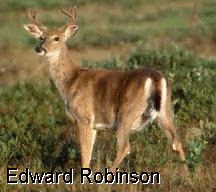
| |
 |
![]()
If you were dry scraping make sure your tools were good and sharp and your hide is thoroughly tightened up in the rack and thoroughly dry before you scrape it. If you were wet scraping, make sure you soaked the hide in water long enough for it to swell enough that the layers kind of 'float' so you can clearly see the layers you need to scrape, so you do a thorough job of scraping. I for one have come to peace with both wet and dry scrape worlds and don't get in arguments about it. As you say, there are advantages and disadvantages to both. Doing dry scrape requires very sharp tools and requires near perfect conditions as far as humidity. The hide has to get dry before it can be wet scraped. It has been theorized by some that dry scrape may have just been used for thinning a hide. Most hide tanners I know that do a lot of hides every year will tell you that the dry scrape method produces a softer hide.
Maybe, I'll just avoid the controversial stuff and stick with the advantages I have found in both methods. I use both, interchangeably. The thing I like best about wetscrape is that everything can be done on the fleshing beam (fleshing, scraping). You don't have to punch holes around the perimeter of the hide, you don't have to string up the hide and stretch it out, re-tighten and re-tighten, etc., etc. You can also use dull tools on wetscrape, no constant tool sharpening. If you use a beam like Paul Dinsmore uses made from various diameters of PVC pipe you can vary the surface to accommodate stubborn areas. You can use a dull draw knife or a bar mounted with handles on each end. Now, I'm not just trying to sell wet scrape here. When I teach students I start them out learning dry scrape. Dry scrape allows you to study the hide a little closer so you see everything that needs to be removed. You don't miss as much as you do when you wet scrape.
You also asked what follows de-hairing. Whether wet or dry scrape you have to remove a layer of epidermis on both sides. If you have a good fleshing tool, if your stretching the hide in a rack (a la dry scrape) it can remove this epidermis or scarf skin during the fleshing process. That's the flesh side. On the hair side their is also a layer of epidermis to be removed. It is best to do this right the first time, for left over epidermis, particularly on the hair side, hinders good brain penetration and is very unsightly (nothing more embarrassing than someone coming up and stripping some left over epidermis off your just finished shirt leaving a white spot under the smoked hide. Of course, that never happened to me. (Hah!).
 Benjamin Pressley
Benjamin Pressley
TRIBE, P.O. Box 20015, Charlotte, NC 28202, USA